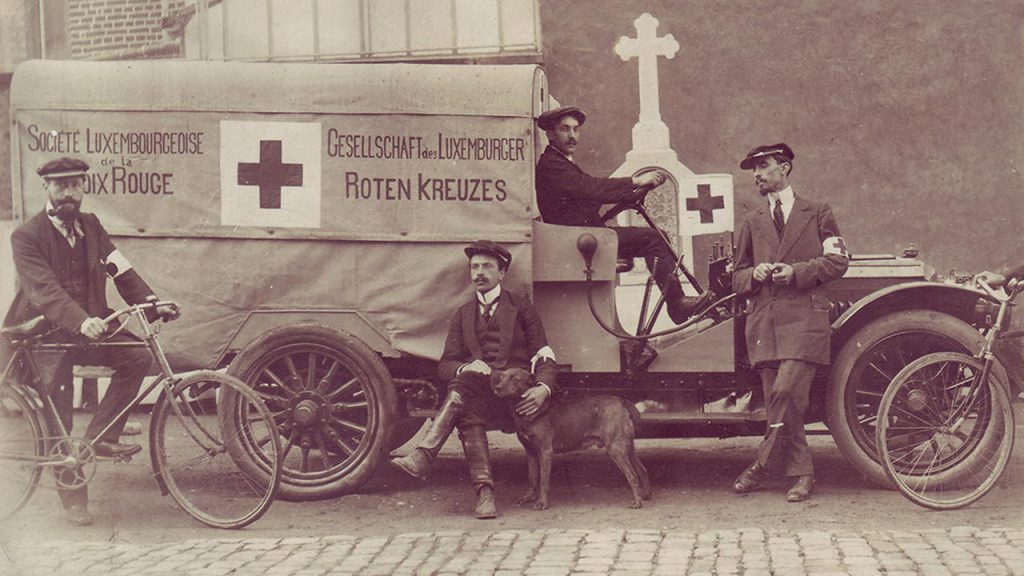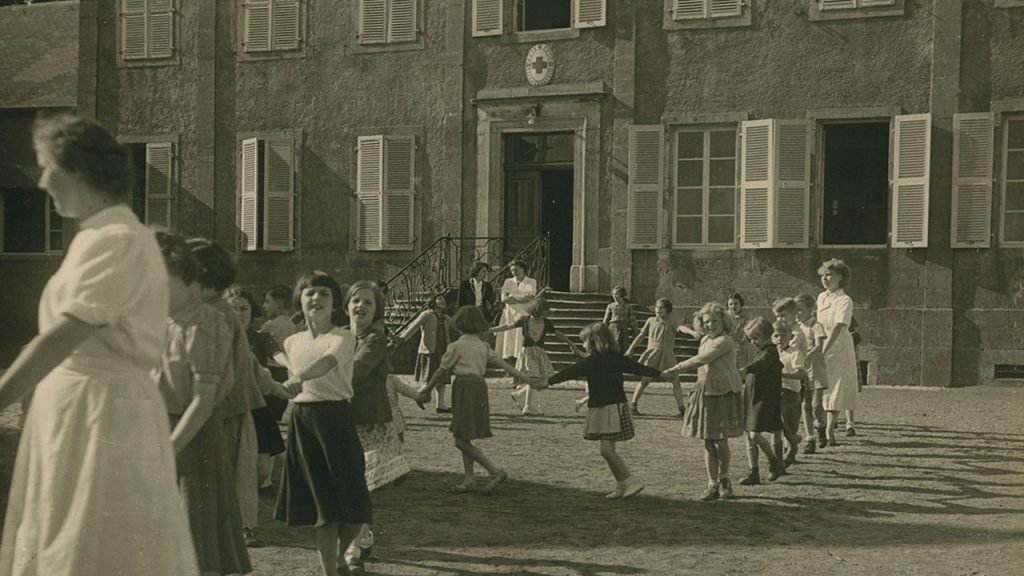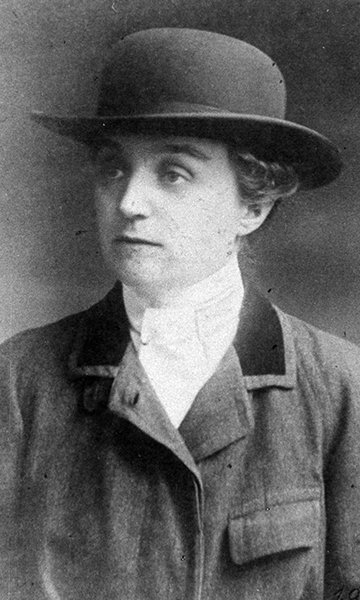
Everything began on the dawn of World War I when on August 6, 1914, H.R.H. Madame Grande Duchesse Marie-Adélaïde launched an impassioned appeal to the generosity of the Luxembourgish people. She said that they should be prepared to give their patronage to a humanitarian organization provided under article 11 of the First Geneva Convention for the Amelioration of the Condition of the Wounded and Sick in Armed Forces in the Field, a convention ratified by the Chamber of Deputies in 1907.
Only two days after this proclamation, on August 8, 1914, Emile and Aline Mayrisch joined with multiple people such as:
They signed before a notary the constitutive act of the Luxembourg Red Cross. From October 1914, they received the acknowledgement of the International Committee of the Red Cross.
The Mayrisch family, conscious of not being locked into legal or symbolic acts, helped this new society launch its first challenge to suffering, death, and despair. To this end, they transformed their own home in Dudelange, now known as the Casino de l’Arbed (given as a donation to the Luxembourg Red Cross in 2007), into a war hospital. From this base, the Red Cross devoted itself from 1914 to 1918 to bringing help, both material and moral, to the many injured and prisoners of the war who had to pass through our country.
When peace returned, people were unanimous in hoping never to have to resort to another war. The founders of the Luxembourg Red Cross saw the need to broaden their scope to peace missions, aiming to become an efficient instrument in the fight against the social evils of the time in the areas of health and welfare. This step was essential in developing the Luxembourg Red Cross in that it led to the passing of the law of August 16, 1923, which conferred a legal personality to our society and approved its statutes. It was also established that the objective of the Red Cross was peace.
The law of 1923 laid the groundwork for the Red Cross to branch out to all municipalities in our country. It still provides the foundation from which the activities of the Red Cross have multiplied and are still multiplying to tackle as many issues and areas of human distress and suffering as possible.

Between 1928 and 1940, the social action of the Red Cross evolved, beginning a stage of great achievement around two central ideas: protecting mother and child, as well as training district nurses required for implementing preventive healthcare. If during this period our organisation experienced a number of tangible results, we also suffered some setbacks. It is important to remember the difficulties that we encountered during the construction of the Maternity Charlotte, or during 1933 when the financial resources of our society were drying up following an economic crisis, which specifically demanded our organisation to expand its care to the victims.
The catastrophe of World War II
For the Luxembourgers, this war began with the population in the south of the country evacuating towards France. Through an office created in 1940 in Montpellier, France, the Luxembourg Red Cross firstly took care of refugees, students, and clergymen chased by the occupying forces,.

Over the decades, the Luxembourg Red Cross has constantly responded to the needs of the most vulnerable by setting up services to help the sick, the socially excluded and young people.
Over the years, more than 40 services have been created to meet all these needs. In many cases, public authorities or the social security subsequently set up funding mechanisms that enabled the Red Cross to further develop and to sustain these activities. However, this funding often does not cover all needs, and new responses to emerging needs are continually being put in place by the Red Cross thanks to the support of donors and the contribution of thousands of volunteers.
Over time, the Luxembourg Red Cross has also developed solidarity with sister National Societies to provide assistance in humanitarian crises.
Thereby a range of services was established.